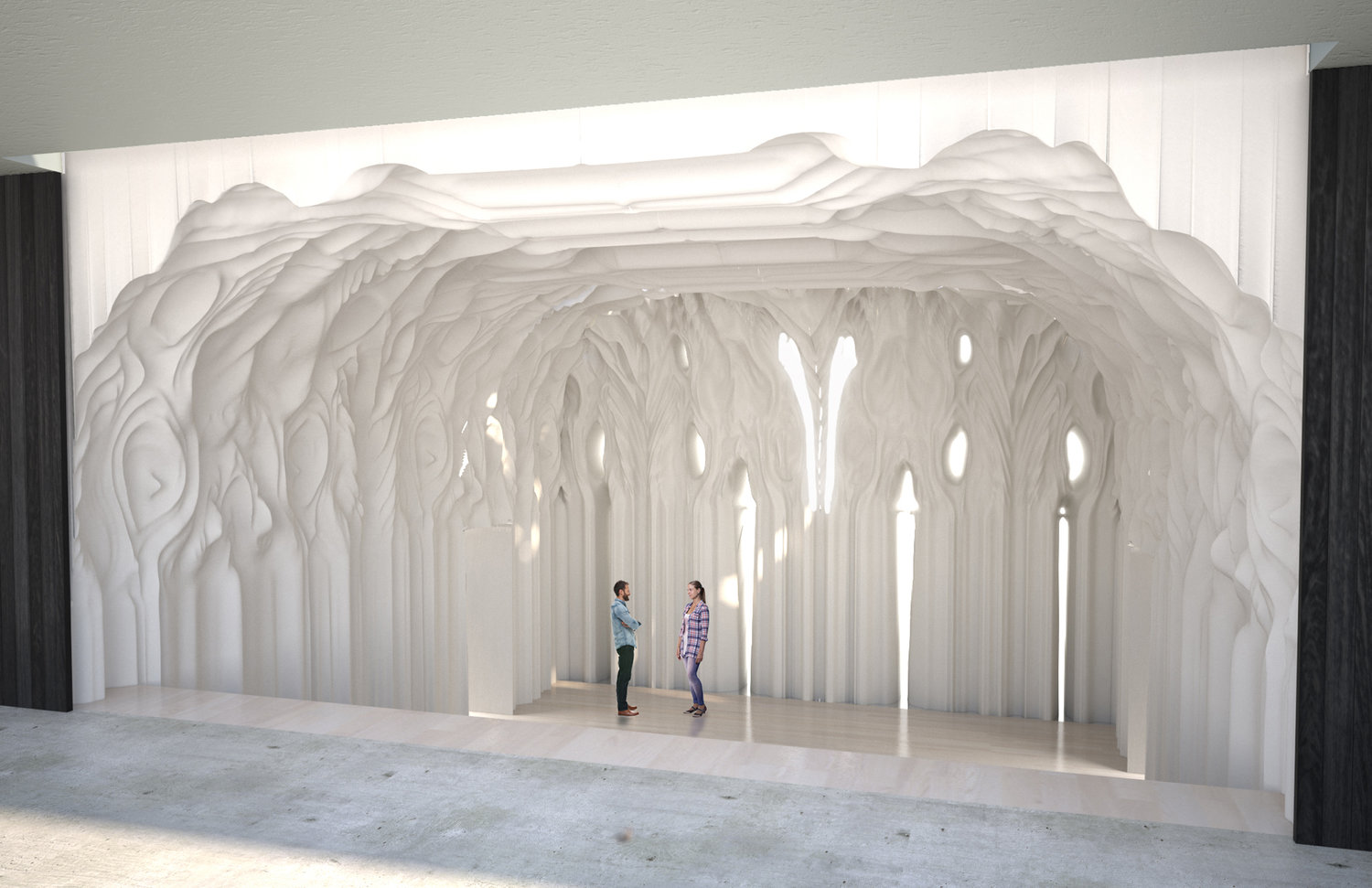




The Kitchen
Architecture
Chelsea (NYC), New York
15,800ft² / 1,460m²
Competition 2017
Images /
Drawings
The Kitchen, pioneer of NYC’s avant-garde scene from 1971 onward, invited Young Projects to propose a concept for renovating and expanding the offices, galleries, and performance spaces it has called home since 1987. A proposed extension on the roof and redesign of both the building’s facade and corefacilitates the evolving requirements of the non-profit’s various programs.
The design embraces nesting new elements into the existing, with an aesthetic of temporal and physical conglomeration. While adding different elements to the building, it was crucial to maintain the integrity of the existing masonry building with consideration to its prominent location directly off the High Line. The signature “black box” of The Kitchen’s entrance conceptually translates into dark, vertical fenestration on the front facade, and also is also echoed in the rectilinear perforated extension on the roof.
The proposed core creates new visual and spatial relationships between different levels in section and acts as a unifying element throughout the building. With its formally charged interiors, a new theater on the roof challenges the notion of a minimalist black box for a performance space. A new plaster technique was developed to create an evocative space which performs acoustically by selectively absorbing and diffusing sound.
The design embraces nesting new elements into the existing, with an aesthetic of temporal and physical conglomeration. While adding different elements to the building, it was crucial to maintain the integrity of the existing masonry building with consideration to its prominent location directly off the High Line. The signature “black box” of The Kitchen’s entrance conceptually translates into dark, vertical fenestration on the front facade, and also is also echoed in the rectilinear perforated extension on the roof.
The proposed core creates new visual and spatial relationships between different levels in section and acts as a unifying element throughout the building. With its formally charged interiors, a new theater on the roof challenges the notion of a minimalist black box for a performance space. A new plaster technique was developed to create an evocative space which performs acoustically by selectively absorbing and diffusing sound.